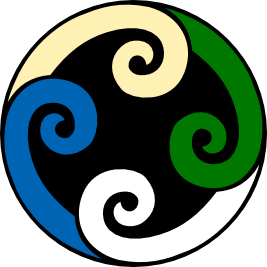7M1 Science
Section outline
-
Kia ora!
I am Ms Hunter. If you have any questions this year, please e-mail me at chunter@mhjc.school.nz
Looking forward to a great year!
Ms Hunter
Education Perfect Class Code: 7LTP6U
Google Classroom Class Code:
-
Learning Outcome
Investigate MRS GREN so we can take care of living things, the earth's treasures.
Success Criteria
1. Identify and describe what MRS GREN stands for
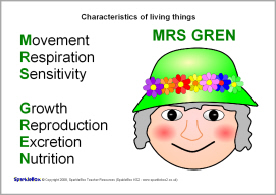
2. Draw and label the parts of simple cells
Activities
1. Whiteboard activity -- Brainstorming who MRS GREN is
2. Making our own cells -- create and label cells using household materials
EXPLORE / TŪHURA learning intentions:
- We are EXPLORING...MRS GREN to identify the living treasures of the earth
- We are EXPLORING... how to use MRS GREN to recognise and classify living things
-
Learning Outcomes:
Investigate MRS GREN so we can take care of living things, the earth's treasures.
Success Criteria:
1. Use a microscope to visualise and draw different cells.
Activities:
1. Using a microscope - BrainPop interactive (click on the link and work through the instructions) and complete the document on the parts of the microscope so we can use them correctly in class
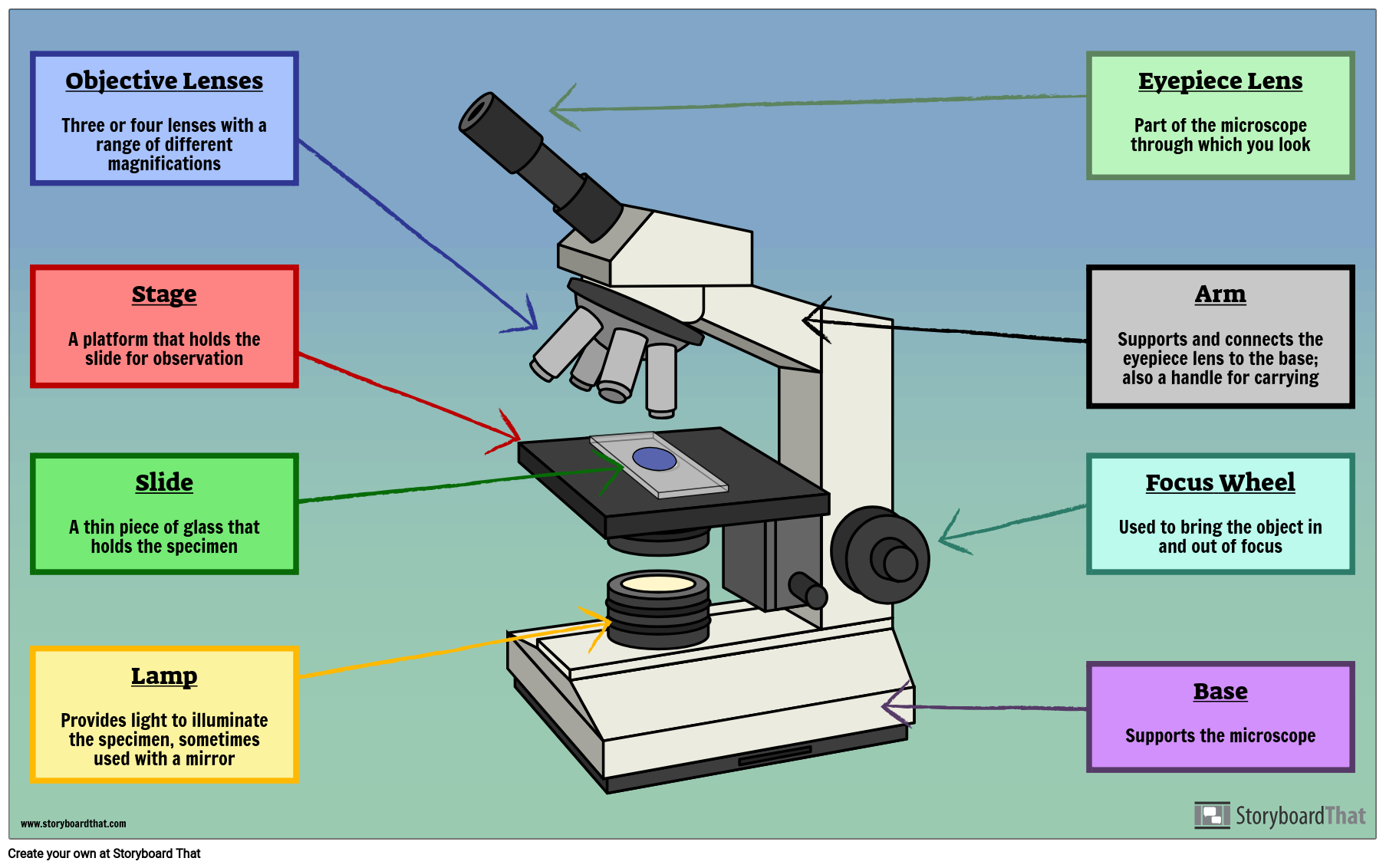
2. View and draw different cells using a microscope
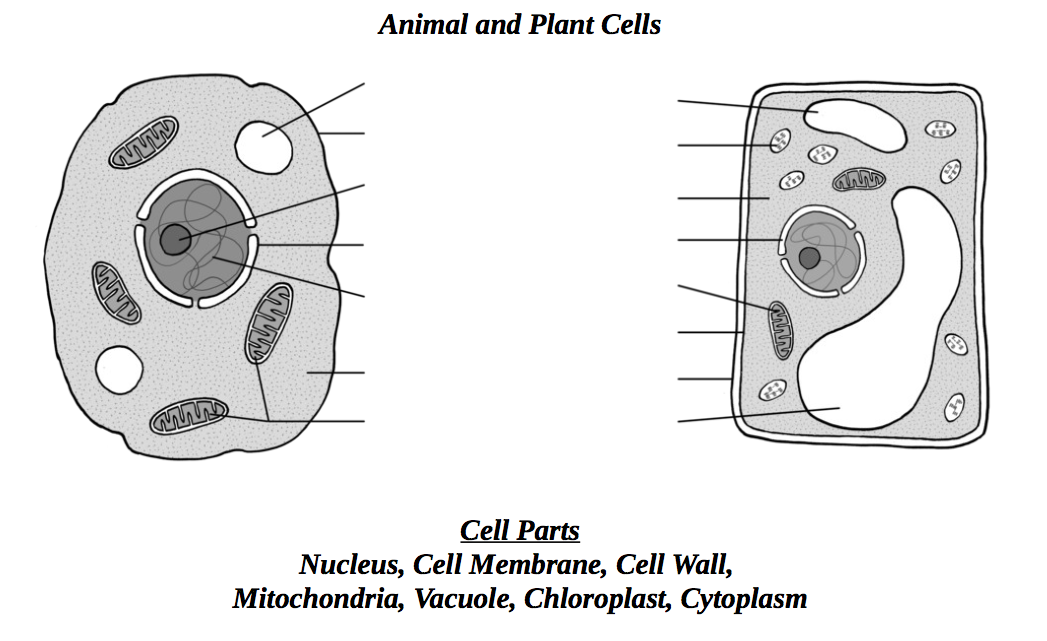
EXPLORE / TŪHURA learning intentions:
- We are EXPLORING...MRS GREN to identify the living treasures of the earth
- We are EXPLORING... how to use MRS GREN to recognise and classify living things
-
Please use the BrainPop Interactive site and then complete this document so you know how we use a microscope.
-
Learning Outcomes:
Investigate MRS GREN so we can take care of living things, the earth's treasures.
Success Criteria:
1. Use a microscope to visualise and draw different cells.
2. Describe in simple terms when, why and how cells divide.
Activities
1. Education Perfect -- Homework is assigned on cells and microscopes
2. In-class -- Notes on mitosis and cell division
EXPLORE / TŪHURA learning intentions:
- We are EXPLORING...MRS GREN to identify the living treasures of the earth
- We are EXPLORING... how to use MRS GREN to recognise and classify living things
-
CAMP WEEK!!
No classes.EXPLORE / TŪHURA learning intentions:
- We are EXPLORING...MRS GREN to identify the living treasures of the earth
- We are EXPLORING... how to use MRS GREN to recognise and classify living things
-
Learning Outcomes:
Investigate MRS GREN so we can take care of living things, treasures of the earth.
Success Criteria:
NUTRITION
1. Identify nutrients needed in our diet.
2. Label and describe the function of different digestive system organs.
Activities
1. Grocery store shopping activity and superfood myths -- what foods do we need and the nutrients we get from them
2. Lab activity -- food tests to determine the nutrients in essential foods
3. Digestive system -- literacy activity into the importance of the organs
FOCUS / ARONGA learning intentions:
- We are FOCUSING...on explaining how living things work by describing what MRS GREN stands for
- We are FOCUSING...on comparing human body systems to structures in other living things (eg. fish, birds, reptiles)
-
Success Criteria:
1) Identify nutrients in common grocery store foods
2) Interact with science texts to learn more about nutrients, types of diets (eg. vegan, dairy-free), and things like superfoods and organic foods
Activities:
1) Finish last week's lab activity on food tests -- conclude what foods have what nutrients
2) Scientific Literacy -- reading Healthy Food Guide magazine articles and share what we have read / learned in Padlet
FOCUS / ARONGA learning intentions:
- We are FOCUSING...on explaining how living things work by describing what MRS GREN stands for
- We are FOCUSING...on comparing human body systems to structures in other living things (eg. fish, birds, reptiles)
-
Kia ora!
We now have time to become an expert on the different articles we were reading about. Read through the posts that we made in Padlet last week. Select one or two topics that you DIDN'T read about that may interest you.
List of topics:
- How food affects our mood
- Essential nutrients (what are they and what is their job)
- Organic food and superfoods
- Vegetarianism and vegan
- Diets (dairy free, allergies)
- The effect of fats and sugars on our bodies
- Probiotics
Make an informative poster in Google Docs, Canva, etc. about the topics you are interested in.
What to include on each slide:
- Description of what you are looking at. For example, what is a vegan diet or what low-fat means.
- The pros of the topics. For example, what are the benefits of eating superfoods.
- The disadvantages, if applicable. For example, what nutrients may you miss out on if you are dairy-free
- Two interesting facts you found out
Helpful websites to use:
- www.brainpop.com Login name: MHJC Login password: 1student
- https://www.healthyfood.com/expert-advice/ ... you will need to look through their articles
- https://health.tki.org.nz/Key-collections/Healthy-lifestyles/Nutrition-websites ... there are a bunch of helpful websites on this page!
DON"T FORGET you can also e-mail your classmates who originally read the articles. They may be able to answer questions you have. :)
-
Learning Outcome:
We will continue to look at MRS GREN: MOVEMENT
Success Criteria:
1) Label the bones in the body
2) Explain how bones and muscles work together so living things can move
Activities:
Introduction to bones
1) Watch the BrainPop video on the Skeletal System. Write down what the three jobs of the skeleton is.
Website: BrainPop
Username: MHJC
Password: 1student2) Review the diagram below of the bones. There are more bones in the body but we are going to focus on these main ones. Make yourself a set of flashcards. One side should have the name of the bone and the other side should have its location in the body (eg. upper arm, foot, head)
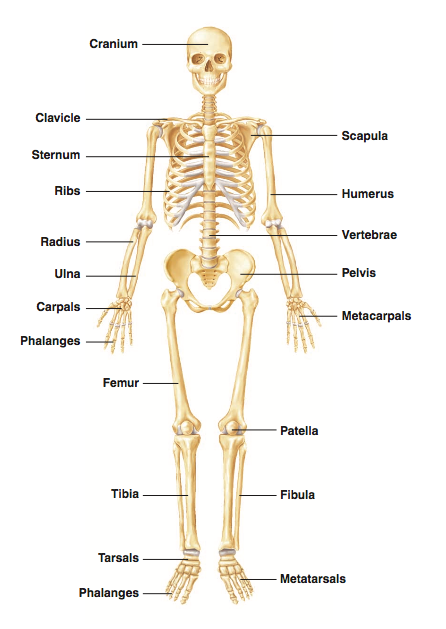
3) Whack a bone -- Visit the whack-a-bone website and you can practice remembering where they are.
We are going to play Simon Says with bones in upcoming lessons so be prepared!
FOCUS / ARONGA learning intentions:
- We are FOCUSING...on explaining how living things work by describing what MRS GREN stands for
- We are FOCUSING...on comparing human body systems to structures in other living things (eg. fish, birds, reptiles)
-
Learning Outcome:
We will continue to look at MRS GREN: MOVEMENT
The Skeletal System has three main jobs: structure and support of the body, required for movement and protects our organs
The bones cannot move without the help of muscles. Where bones connect is called a joint, which is supported by tendons and muscles. There are different joints depending on how your bone needs to move. For example, you elbow bending is a different movement to your shoulder rolling. If you are looking for extension work (not required): compare the common joints (ball and socket, hinge, pivot, saddle, gliding)
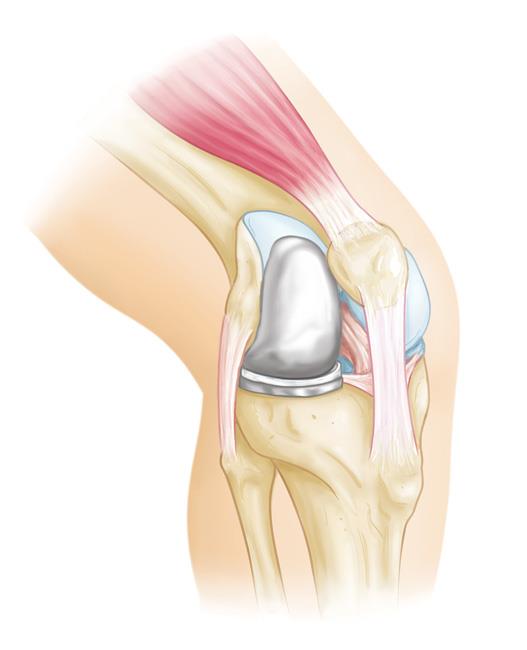
Success Criteria:
1) Label the bones in the body
2) Explain how bones and muscles work together so living things can move
Activities:
1) Google Hangout (Tuesday at 12): Practicing the names of bones -- Simon Says with bones, Bone kahoot
2) At home activity: Making a joint to see how bones and muscles work together so we can move
3) Google Hangout (Wednesday at 9 am) -- Online discussion about science assessment for MRS GREN
-
Hopefully these instructions are clear for you.
You can use any cardboard but one from a cereal box would work. If you don't have a split pin, use a paperclip instead. :)
-
-
Google Hangout on Wednesday @ 11 am. See your e-mail for the link.
Assessment Work to complete
- Please refer to Google Classroom for the assessment document in "Assessment Checkpoint #1".
- You are working to complete the table only at this point and upload it by Wednesday
After you have received feedback, THEN you work on the presentation.
- You upload what you have started on the presentation (I DO NOT EXPECT IT TO BE COMPLETED) by next Wednesday
-
Google Hangout on Wednesday @ 11 am. See your e-mail for the link.
Assessment Work to complete
- Everyone who has submitted Checkpoint #1 via Google Classroom has received feedback by now.
- You are working on your PRESENTATION (Step 3) and aiming to upload what you have started to the Google Classroom "Assessment Checkpoint #2".
Photo from our Google Hangout discussion:
-
NEW CONTEXT: Wai or Kai?!
Learning Outcomes:
How might we educate the local fishing community so our local waterways are not depleted of their resources.
Success Criteria:
1) Participated in the interactive Overfishing presentation
2) Can describe how overfishing affects the ocean (and other waterways)
3) Identify ways we can support kaitaitikanga (guardianship) of the ocean
Activities
1) Finish your assessment
2) Virtual reality session -- complete the survey
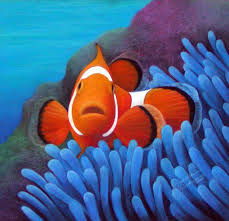
-
You can see more of the videos from the lesson we had on this website.
-
For those looking to see how snapper eat kina, here's the link to the video clip.
-
-
CONTEXT: Wai or Kai?!
Learning Outcomes:
How might we educate the local fishing community so our local waterways are not depleted of their resources.
Success Criteria:
1) Participated in the virtual reality session on overfishing (Wed)
2) Can describe TWO problems that overfishing creates
3) Collect scientific data on water quality (Thursday)
Remember the assessment is due on FRIDAY, 22 May at 1 pm.
EXPLORE / TŪHURA learning intentions:
- We are EXPLORING...the classification of different types of consumers so we can analyse how food webs are impacted by overfishing
- We are EXPLORING...Tāne's stream by collecting and observing its water quality to question what environments some fish live in
-
Wai or Kai
Learning Outcome:
Success Criteria:
1) Identify and compare different types of consumers (top predator, primary and secondary consumer, producer, carnivore, omnivore, herbivore, scavenger)
2) Explain how energy moves through a food web
3) Draw simple food chains
Activities:
1) Food webs: reading different food webs (desert, marine, forest); participate in a role playing game
2) Food chains: use food webs to draw food chains; discuss how food webs and chains can be disrupted by human activities such as overfishing and pollution
3) Classification: Research the different fish in New Zealand waters --- use this website for Tuesday's work:
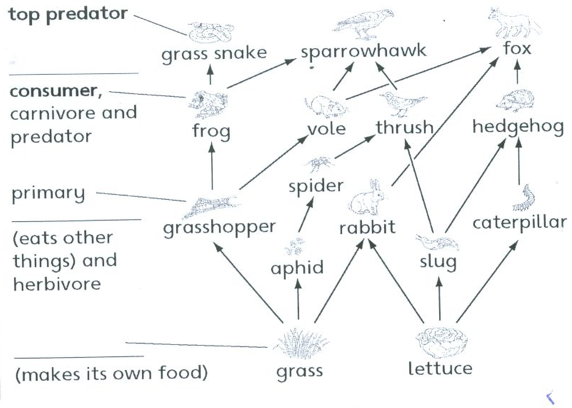
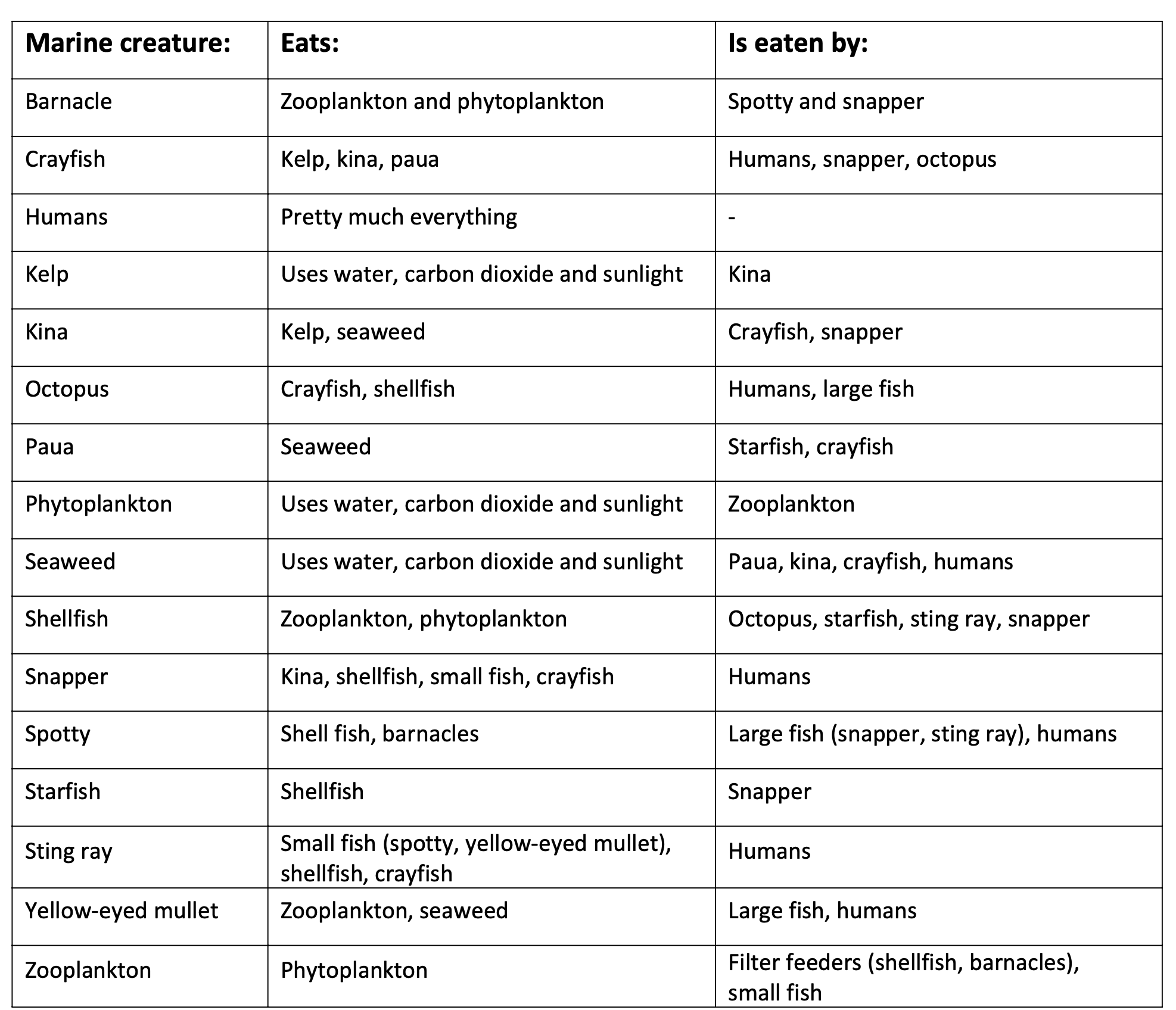
EXPLORE / TŪHURA learning intentions:
- We are EXPLORING...the classification of different types of consumers so we can analyse how food webs are impacted by overfishing
- We are EXPLORING...Tāne's stream by collecting and observing its water quality to question what environments some fish live in
-
We are carrying on from last week's activities:
1) Completion of the Large Food Web
2) Write food chains using a variety of food webs
FOCUS / ARONGA learning intentions:
- We are FOCUSING...describing how human impacts (eg. overfishing, pollution, tourism) affect marine ecosystems
- We are FOCUSING...on explaining the direct effects of human impacts (eg. food chains and food webs)
-
Success Criteria:
1) Investigate and explain the impact of humans on aquatic ecosystems and how to eliminate / reduce the impacts using models
2) Describe different habitats in aquatic ecosystems
3) Collect scientific data from the Tāne stream
Activities:
1) Research NZ Fish -- refer to Google Classroom -- you will select one fish in NZ waters (marine or freshwater) and find out more information about its catch sizes, limits, what it eats, etc.
2) Impacts on fishing -- compare how different nets work to determine their effects on fish populations
3) Practical -- data collection at Tāne on Thursday
FOCUS / ARONGA learning intentions:
- We are FOCUSING...describing how human impacts (eg. overfishing, pollution, tourism) affect marine ecosystems
- We are FOCUSING...on explaining the direct effects of human impacts (eg. food chains and food webs)
-
Students are working on their assessment research and TedTalk presentation.
Presentations will take place in Week 11.
PLAN & DO / WHAKAMAHI learning intentions:
- We are PLANNING...to present our research on the impacts of overfishing on NZ native fish so that we can... educate society in attempt to solve the problem
- We are PLANNING to collaborate with English and Global Studies so that we can share and publish our images and messages with New Zealand Fisheries
-
We are exploring different experiments relating to heat!
- Which type of cup should we use for keeping our Milo warm?
- Which socks will keep our feet warm?
-
Guest Speaker!
We have NZ Fisheries to come in and chat about their work with NZ oceans.
Activities
1) Scientific Literacy
2) Discussion of the learning context
3) Student Volunteer Army event planning
EXPLORE / TŪHURA learning intentions:
- We are EXPLORING...hiking gear by observing and investigating the forces associated with them
- We are EXPLORING...how fast we walk by calculating our speed and collecting data from pedometers
-
Learning Outcome
Describe the forces involved when we walk or run.
Success Criteria
1) Define what a force is
2) Identify and give examples of different types of forces: gravity, drag (air resistance), friction, thrust, pressure, buoyancy, magnetic
3) Define contact force and non-contact force. Identify each force as a contact force or a non-contact force
Activities1) Photographing different forces from around the school and describing their movements
2) Parachute making
Parachute Checklist:
1) Material use --> Have you used the required materials? None, A few, Some, or Lots
2) Parachute drawing --> Have you included detail in your drawing? None, A little, Some, or Lots
3) Parachute paragraph --> How relevant and clearly written is your paragraph? Uses minimal detail and is not clear, Uses some detail and is somewhat clear, Uses detail and is clear, or Uses a lot of detail and is very clear
EXPLORE / TŪHURA learning intentions:
- We are EXPLORING...hiking gear by observing and investigating the forces associated with them
- We are EXPLORING...how fast we walk by calculating our speed and collecting data from pedometers
-
Please answer these questions in your books:
1) List the five different types of forces that use push and pull.
2) Describe two of the forces and write an example of when that force is being "used".
3) Draw a picture of a parachute. What are the two main forces are acting on it? Draw them into your picture.
-
Learning Goals:
Explore and investigate the forces associated with hiking gear (eg. compass, boots)
Success Criteria:
1. Identify and describe different types of forces: Buoyancy, friction, air resistance (drag), gravity, pressure, magnetic
2. Compare contact and non-contact forces
3. Investigate how a compass works and how the smoothness of a surface related to friction
Activities:
1. Take up work from last week on forces
2. Explore how a compass works
3. Investigate how the smoothness of a surface (reducing friction) changes the distance a marble can rollEXPLORE / TŪHURA learning intentions:
- We are EXPLORING...hiking gear by observing and investigating the forces associated with them
- We are EXPLORING...how fast we walk by calculating our speed and collecting data from pedometers
-
Learning Goals:
Explore and investigate the forces associated with hiking gear (eg. compass, boots)
Success Criteria:
1. Investigate how the smoothness of a surface related to friction
2. Apply your understanding of friction to making choices about shoes used for hiking
Activities:
1. Take up Rolling Marbles activity
2. Art activity -- compare the shoe tread texture and use your understanding of friction to determine the best shoe for hiking
3. Measuring forces -- use a force meter to measure frictional forces (in class and/or in person)For those wanting more practice at investigating forces and shoe grip, you can complete this online one:Go to this Website: www.bp.com/bpesClick on 'Enter a student code' (at the top right hand corner)Enter the code: 88146Click on 'Launch' for the "Force Meters Online Experiment"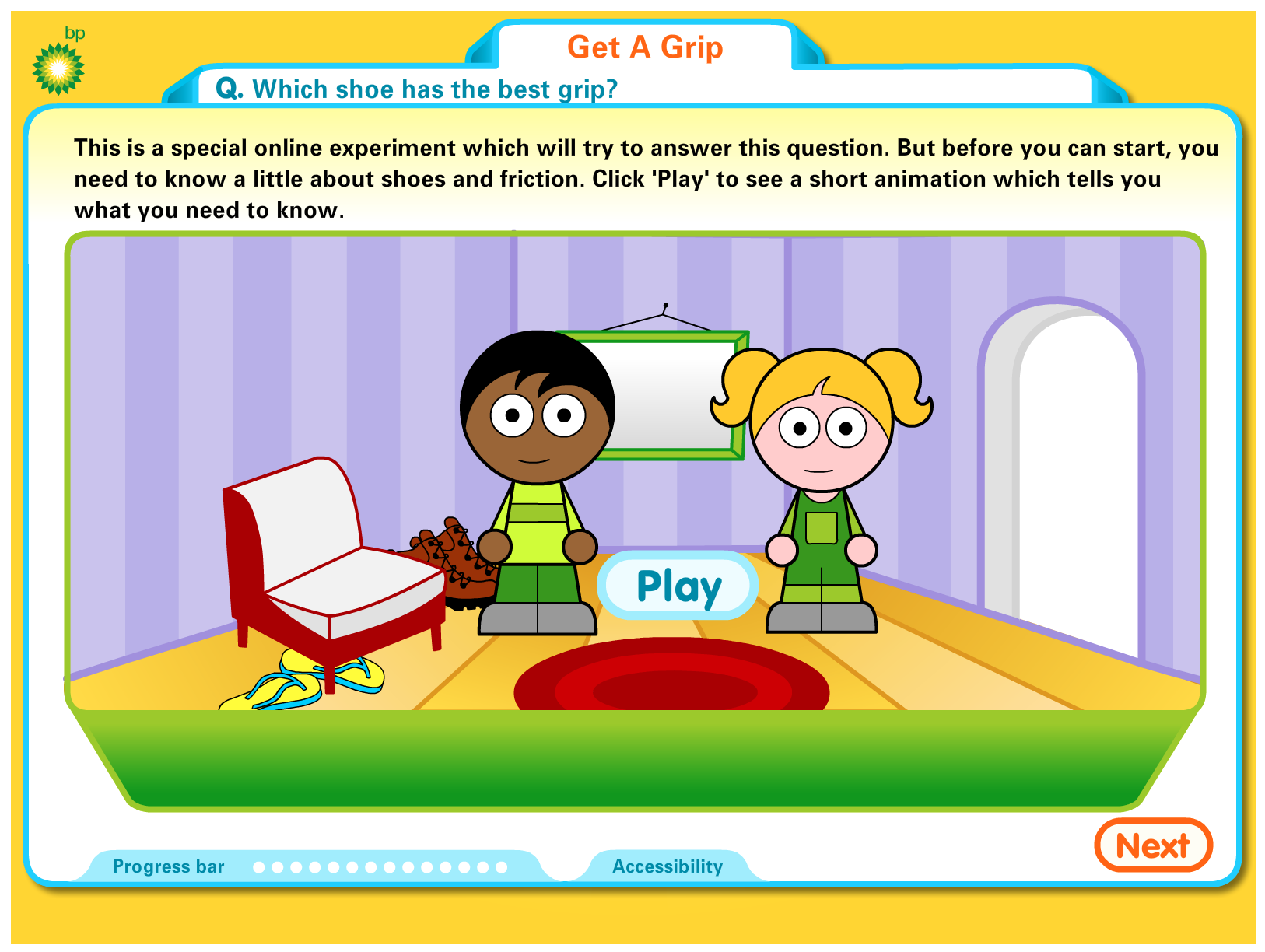
EXPLORE / TŪHURA learning intentions:
- We are EXPLORING...hiking gear by observing and investigating the forces associated with them
- We are EXPLORING...how fast we walk by calculating our speed and collecting data from pedometers
-
Success Criteria
1) Investigate how the mass affects the movement of objects ... apply this to gear you may pack on a hike
Activities
1) Forces in Action
-- work through the online lab activity by following the instructions.
-- Here is the link https://www.sciencekids.co.nz/gamesactivities/forcesinaction.html
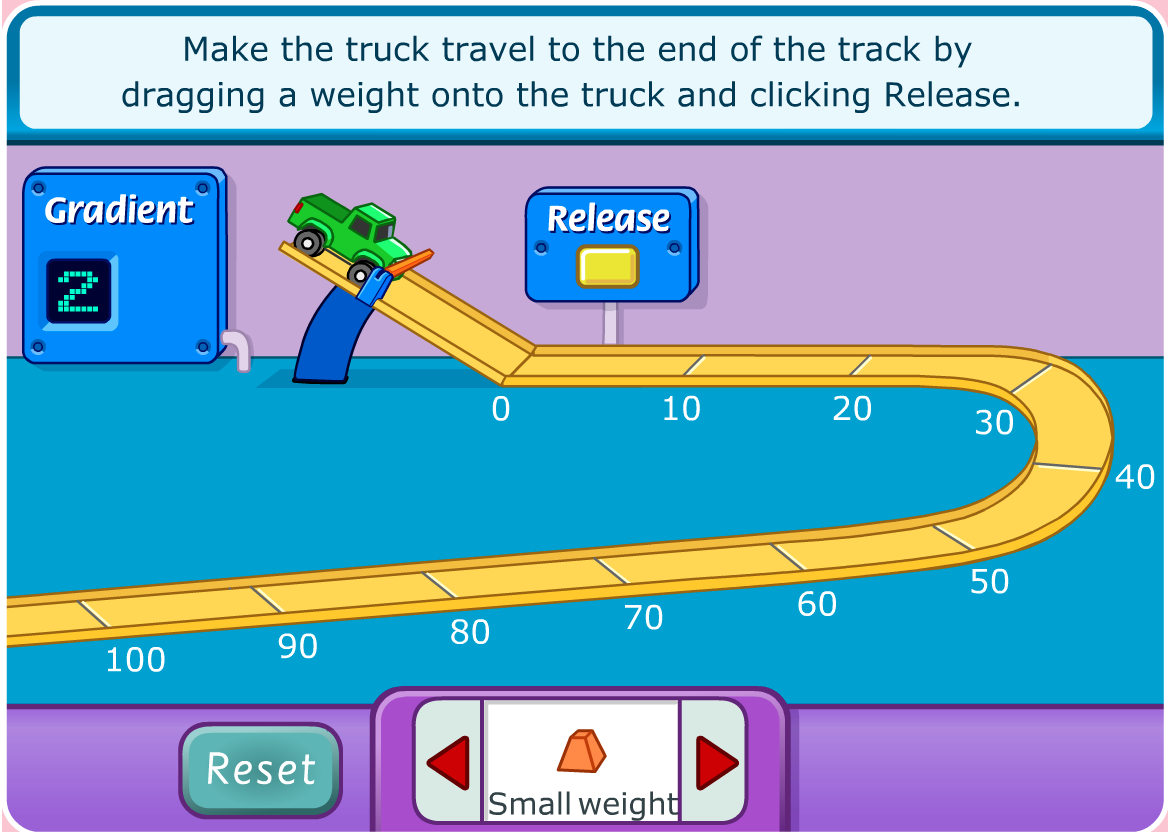
-- Answer these questions (record the answers in a Google Doc)
1) Did the truck move further down the track when you added more mass? Why do you think this happens?
2) What effect did using a steeper ramp have? What force is involved (pick one): friction, gravity or air resistance?
3) What did the parachute do to the car?
4) What combination of mass, slope and parachute made the truck travel the furtherest down the ramp?
EXPLORE / TŪHURA learning intentions:
- We are EXPLORING...hiking gear by observing and investigating the forces associated with them
- We are EXPLORING...how fast we walk by calculating our speed and collecting data from pedometers
-
Success Criteria
1. Accurately measure using a variety of tools (ruler, measuring tape)
2. Collect and organise data using Google Sheets
Activities
1. Practice measuring the length of different objects
2. Measure how far you walk when taking 10 steps
3. Using Google Sheets and new functions to organise data and make graphs
FOCUS / ARONGA learning intentions:
- We are FOCUSING...choosing a method to track out steps (pedometer, Microbit, counting ourselves)
- We are FOCUSING...describing why our stride length changes by comparing our steps when walking and running
-
Success Criteria
Investigate and evaluate different ways to track our steps.
Calculate our stride length.
Activities
1) Measure and calculate our stride length
2) Investigate apps that we can use to track our steps
3) Introduction to pedometers: use pedometers to analyse how running vs. walking affects the number of steps we take
FOCUS / ARONGA learning intentions:
- We are FOCUSING...choosing a method to track out steps (pedometer, Microbit, counting ourselves)
- We are FOCUSING...describing why our stride length changes by comparing our steps when walking and running
-
New Context: Out of this World!
Activities:
1) Introduction to space: Kahoot quiz
2) Exploring our planets: What do we need to know about the planets or want to know about the planets? Research a planet in groups and prepare a short presentation to share information. (Refer to Google Classroom
**We are off to Rangitoto on Thursday so there is no class.
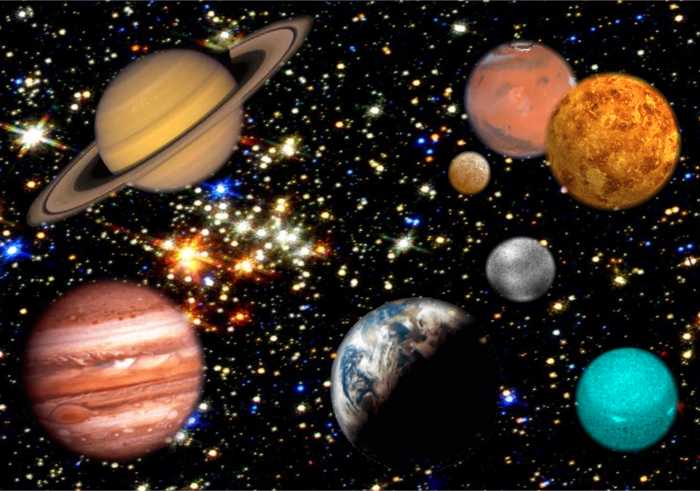
EXPLORE / TŪHURA learning intentions:
- We are EXPLORING...how the solar system was formed by investigating the behaviour of the materials planets are made of
- We are EXPLORING... rockets by observing and testing different rocket designs
-
Learning Outcomes: Discover what planets are made of to understand how and why things can/cannot live on them.
Success Criteria:
1) Explain how the distance of the planets from the sun is linked to their temperature and make-up (eg. rocks, gas)
2) Describe the steps involved in moving between states of matter (solids, liquids, gases)
Activities:
1) Role play model: Map out in metres how far planets are from the sun
2) Class discussion: States of matter
3) Literacy activities: refer to Google Classroom for the "Why does Matter matter" reading and questions
4) Interactive: There are videos in Google Classroom to visualise the changes between states
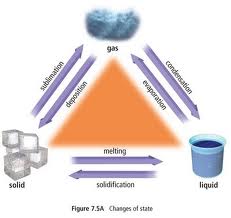
EXPLORE / TŪHURA learning intentions:
- We are EXPLORING...how the solar system was formed by investigating the behaviour of the materials planets are made of
- We are EXPLORING... rockets by observing and testing different rocket designs
-
Learning Outcome:
Investigating the behaviour of solids, liquids and gases to describe the density and formation of different planets.Success Criteria:
1) Compare the density of solids, liquids and gases referring to the number of particles they have
2) Explain why the planets have different densities
Activities:
1) Practical activity: Ice in the beaker activity ... Recap the names of the processes involved in changing between the three states
2) Practical activity: Observing the behaviour of solids, liquids and gases and looking at density cubes to compare their structure
EXPLORE / TŪHURA learning intentions:
- We are EXPLORING...how the solar system was formed by investigating the behaviour of the materials planets are made of
- We are EXPLORING... rockets by observing and testing different rocket designs
-
Start to investigate rockets...
- rocket fuel
- rocket designs
EXPLORE / TŪHURA learning intentions:
- We are EXPLORING...how the solar system was formed by investigating the behaviour of the materials planets are made of
- We are EXPLORING... rockets by observing and testing different rocket designs
-
Success Criteria:
1) Define and give examples of ductile, brittle, malleable, conductivity, lustre, density, magnetic and dull
2) Investigate the properties of different materials to determine the common properties of metals and non-metals
3) Start to compare elements, molecules and compounds as we begin to explore chemical reactions
Activities
1) In-class practicals on properties of materials (2 lesson)
2) Use molymods to make and compare different chemicals
3) Link the properties of materials to building space ships and using rocket fuel
EXPLORE / TŪHURA learning intentions:
- We are EXPLORING...how the solar system was formed by investigating the behaviour of the materials planets are made of
- We are EXPLORING... rockets by observing and testing different rocket designs
-
Learning Outcomes
- Distinguish between chemical and physical changes
- Identify the signs of a chemical reaction and recognize not ALL signs mean a reaction has occurred
- Identify products and reactants in chemical reactions
- Apply the understanding of chemical reactions to make "rocket fuel" for our own rockets
Activities
1) Hands-on practical on chemical changes (observations and summary)
2) Education Perfect tasks on chemical changes
3) Making rockets in our groups ... testing different rocket fuels out
FOCUS / ARONGA learning intentions:
- We are FOCUSING...describing chemical reactions so we can compare and choose the most appropriate "rocket fuel" for our rockets
-
PLAN & DO / WHAKAMAHI learning intentions:
- We are PLANNING to construct rockets so that we can apply our understanding of chemical reactions
